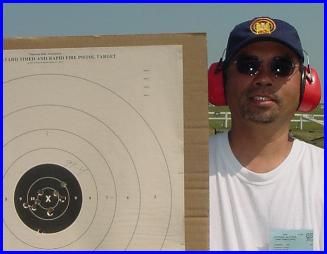
Greetings Shooters,
What is 20/20? What do these numbers signify? How can I relate? Shooters probably have a better background to understand what is 20/20 as compared to the lay individuals. Shooters are very familiar with red dot scopes and the dots are quantified by the different sizes such as 2 moa (minutes of angle or arc), 4 moa, 6 moa, 8 moa, 12 moa and 16 moa which are common sizes for one popular brand of red dot scopes.
The 20/20 letters of an eyechart have dimensions with a purpose. The total size of each letter subtends 5 minutes of angle. The thickness of each letter subtends 1 minute of angle. The opening in the letter "C" and the spacing between the legs of the letter "E" subtends 1 minute of angle. Some eyecharts only contain the letter C or letter E with the opening of the letters facing either up, down, left or right. The ability to distinguish 1 minute of angle is denoted as 20/20. Therefore, a 20/20 size letter would have parts which would subtend 1 moa at a distance of twenty feet.
"Minimum angle of resolution" for any individual eye is determined by the reciprocal of the Snellen fraction, e.g.:
A recent high power rifle junior shooter I examined was able to see 20/10 with the proper lens correction for her shooting eye. Those who are able to discern 20/10 letters are able to resolve 1/2 minute of angle.
To put this into perspective upon reviewing the instruction booklet of the Ultradot brand scope, each click of the elevation and windage dial will move the point of impact 1/2 moa which is 1/2 inch at 100 yards. At 50 yards, 1/2 moa will be 1/4 inch. 20/20 equivalent (1 moa) at 50 yards will then be 1/2 inch minimum angle of resolution. Regardless if one can discern 1/2 moa or only 2 moa, enjoy our sport.
Good Vision and Good Shooting to All,
Norman H. Wong, O.D.
